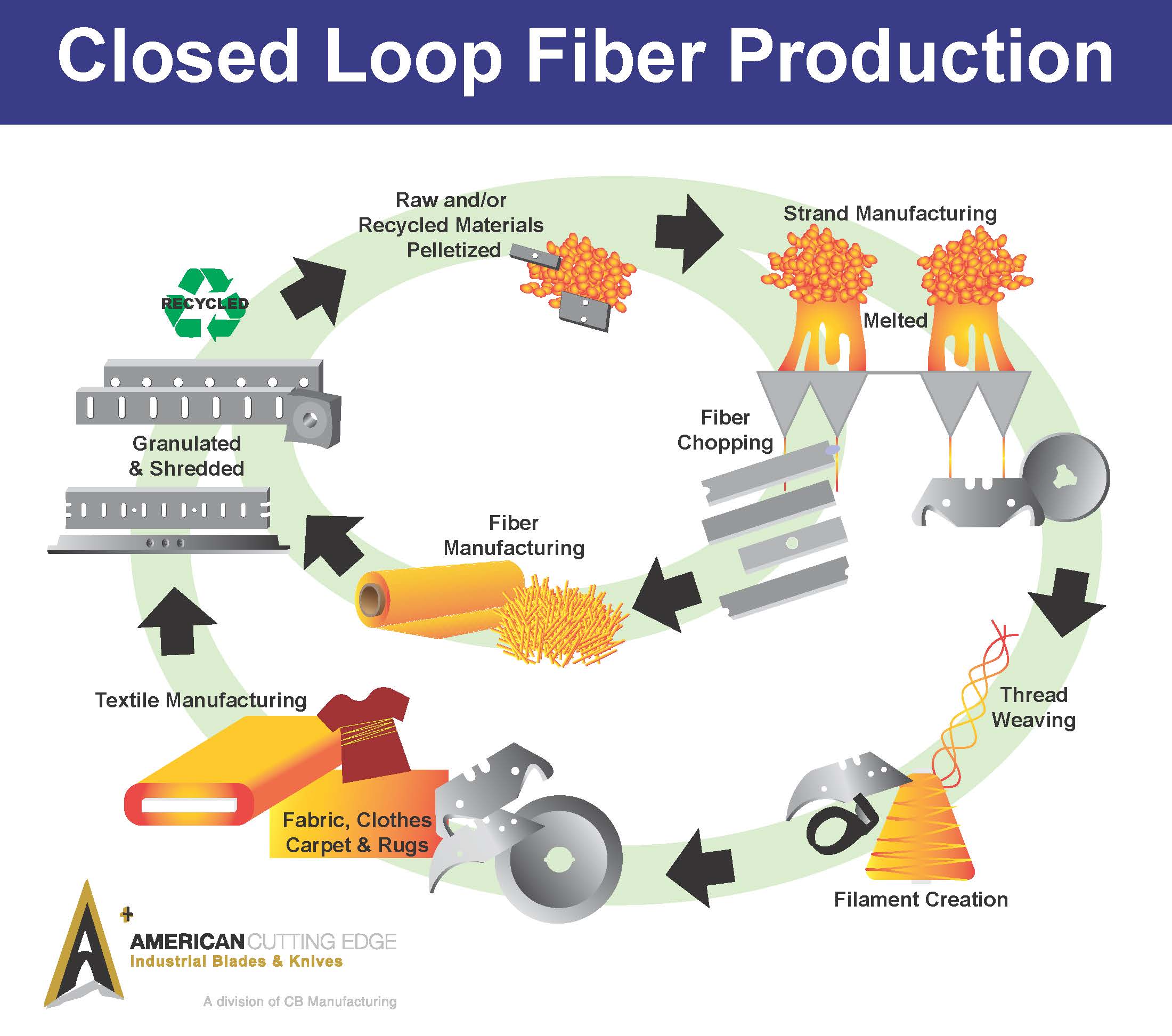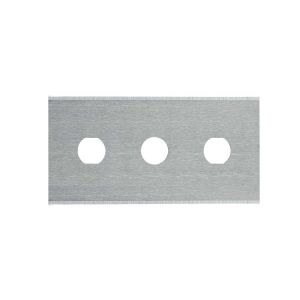Closed Loop Fiber Production

Global production of fiber has soared over the last half-century. When we consider that production has quadrupled over the last fifty years, it's difficult to imagine that there could be any greater increase. However, the market anticipates another 43% increase in just the next eight years. To put this into perspective, this increase translates to a production per capita of almost 37 and a half pounds of fiber produced per person. That's a lot of fiber!
With tremendous production comes the potential for great amounts of waste. We commonly think about closed-loop recycling in relationship to the
 plastics industry and the recycling of bottles, packaging, and other items.
Closed-loop manufacturing refers to any process where the materials used in production can be reused. Post-consumer waste is collected and reused at the start of the process, which conserves natural resources.
plastics industry and the recycling of bottles, packaging, and other items.
Closed-loop manufacturing refers to any process where the materials used in production can be reused. Post-consumer waste is collected and reused at the start of the process, which conserves natural resources.
Throughout the process of manufacturing fiber, it is critical to have the right industrial knife and blade manufacturer as a partner. Different materials and coatings can make a huge impact on the quality of the chop when you're producing fiber. Maintaining a sharp cutting edge is extremely important since depending on your operation, blade changeouts can take a significant amount of time. In some cases, changeouts can take up to two or three hours to load each cutter head. Working with a partner that can provide a breadth and depth of coatings and material options can positively impact your operations, production, and maintenance goals.
In the post-pandemic economy, businesses across the board are seeking to improve the value of their supply chain relationships. Many are looking for reductions in risk, optimization of costs, and more transparent and collaborative relationships. As supply chain relationships are rebalanced, there's also a push to simplify the supplier footprint across the organization via vendor consolidation.
Five Immediate Benefits of Vendor Consolidation Include:
- Reduced Purchasing Costs – As the supplier base reduces, purchasing power increases due to the ability to allocate more resources to fewer suppliers.
- Reduced Process Costs – As purchasing deals with fewer vendors, transactional costs decline. This can be a significant saving when one considers the cost of setting up and maintaining suppliers in internal systems.
- Reduced Risk – Reliance on fewer suppliers significantly reduces risk. The shift moves to focus on securing all applicable risks throughout the supply chain.
- Improved Supplier Relationships – Fewer suppliers provide an opportunity to build better relationships with core suppliers. Not only do customers benefit from cost improvements but also from building more solid, lasting partnerships. Vendor consolidation produces a natural focus on quality, efficiency, and performance.
- Better Overall Solutions – Businesses that work with fewer suppliers can work with vendors who can look at their business in totality rather than those that offer spot solutions, which might be less comprehensive in nature. There are major benefits when a vendor, like ACE, becomes a partner that can take a deep dive into providing options for operational efficiency.
Working with an industrial knife and blade manufacturer like American Cutting Edge provides operations of all sizes the opportunity to collaborate at every stage in the production process from the pelletization of materials at the beginning to the recycling of scrap at the end and every step in between.
Let's walk through the closed-loop fiber production cycle in relation to cutting applications.
Manufacturing of Fibers for Fiberglass
- The first step starts with raw or recycled materials that are processed into pellets or granules via the pelletizing process.
- The pellets or granules are melted and converted into strands that are chopped into fiber using fiber chopping blades (ACE item numbers F-037503, F-045001, F-029372, F-046252, F-018801).
- Chopped fiber can be used in its chopped form or made into sheets for use in building materials, filler materials, insulation, and other products. Ask about our custom capabilities for the chopped fiber process.
- Waste from the creation of chopped fiber or fiber sheets is recycled using a shredding and granulating process. (ACE item numbers 456-4040r, 460-010002, 460-025206, 460-028006, 456-C250025HS, 457-C250025HS, 456-4040-12, 460-0360000).
Manufacturing of Fibers for Textiles
- We start in the same place as with manufacturing fibers for fiberglass -- raw or recycled materials that are processed into pellets or granules via the pelletizing process.
- The pellets or granules are melted and converted into strands.
- Strands are used to create synthetic fibers that are weaved into threads. (ACE item numbers RG-01, RG-02, RG-03, H-020001, H-020002, H-020003, H-023231)
- Threads are used to create items such as fabric, textiles, carpets, and clothing. (ACE item numbers CR-011001, CR-017701, CR-023601, 470-030003) as well as custom slitters for your application.
- Waste from the manufacturing of textiles, carpeting, and clothing is recycled using rugged textile recycling equipment. (ACE item numbers 460-0280002, 460-028006, 460-0252004, 460-0252006, 460-0100002)
The ability to keep our customers’ production up and running at the most efficient level is critical. Anything we can do to positively influence less downtime is a win not just for our customers but for us as well. The team at American Cutting Edge works with suppliers and customers to improve product quality, increase blade performance, and boost profitability.
Our goal is to make cutting effortless for our customers from the first cut of the line to the last. We have a deep understanding of our customers’ values, products, and product lines. To learn how we can support your fiber, fiberglass, and textile chopping needs, contact the experts at American Cutting Edge.
We are eager to understand your business and offer best-fit solutions.





